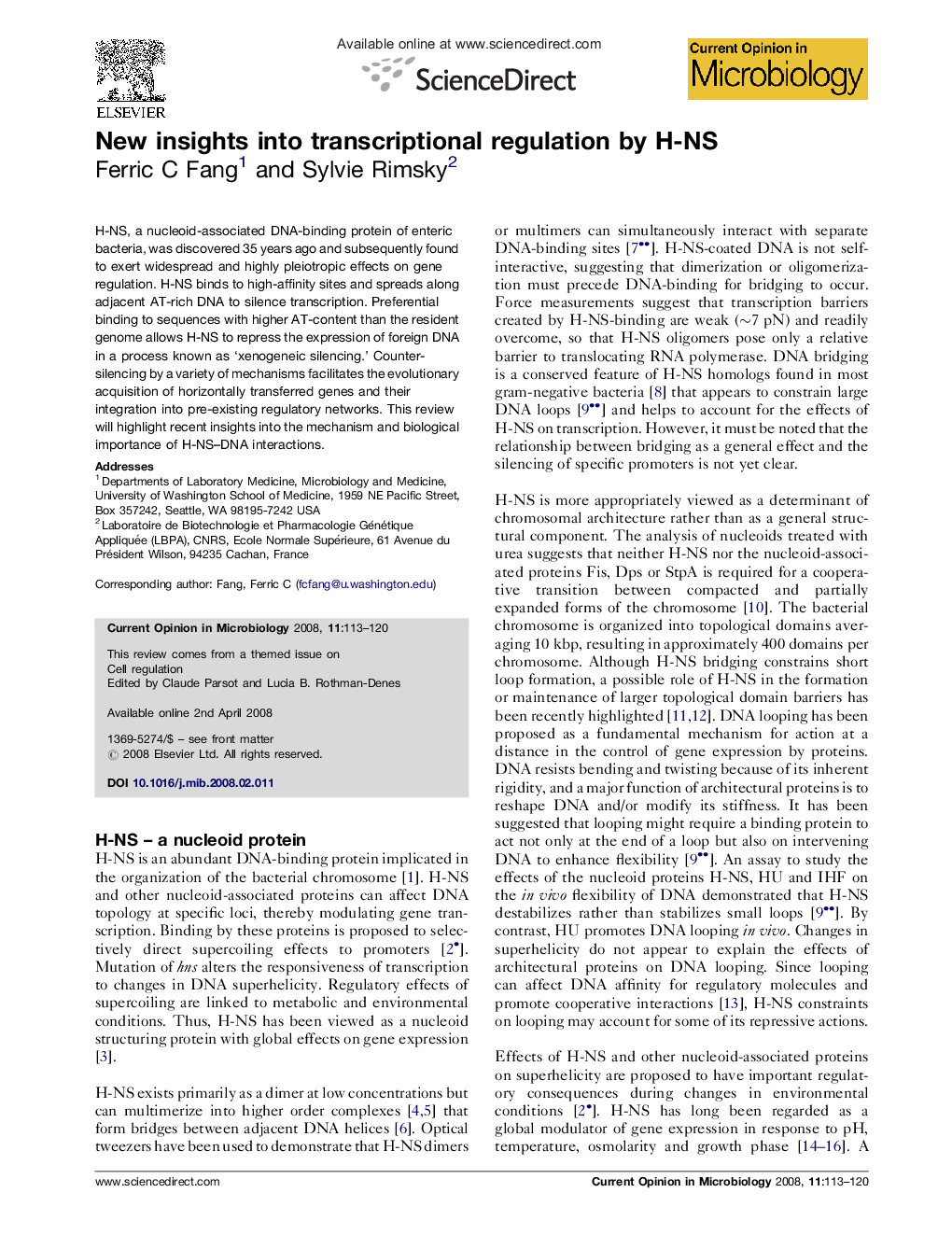| Article ID | Journal | Published Year | Pages | File Type |
|---|---|---|---|---|
| 3399500 | Current Opinion in Microbiology | 2008 | 8 Pages |
H-NS, a nucleoid-associated DNA-binding protein of enteric bacteria, was discovered 35 years ago and subsequently found to exert widespread and highly pleiotropic effects on gene regulation. H-NS binds to high-affinity sites and spreads along adjacent AT-rich DNA to silence transcription. Preferential binding to sequences with higher AT-content than the resident genome allows H-NS to repress the expression of foreign DNA in a process known as ‘xenogeneic silencing.’ Counter-silencing by a variety of mechanisms facilitates the evolutionary acquisition of horizontally transferred genes and their integration into pre-existing regulatory networks. This review will highlight recent insights into the mechanism and biological importance of H-NS–DNA interactions.
